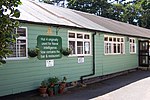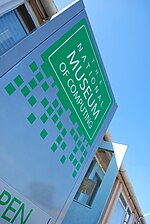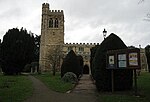Hut 7
Hut 7 was a wartime section of the Government Code and Cypher School (GC&CS) at Bletchley Park tasked with the solution of Japanese naval codes such as JN4, JN11, JN40, and JN-25. The hut was headed by Hugh Foss who reported to Frank Birch, the head of Bletchley's Naval section. Hut 7 supplied cryptanalysts and linguists to Bletchley's front line station the Far East Combined Bureau (FECB) at Hong Kong, then Singapore, then Anderson Station (Colombo, Ceylon, now Sri Lanka), then Allidina School in Kilindini, Kenya before moving back to Colombo.Bletchley co-operated with the US Navy Code and Signals Section known as OP-20-G in Washington D.C., and with FRUMEL in Melbourne (although the reciprocal cooperation from Fabian at FRUMEL was limited and reluctant); see Central Bureau and FRUMEL.
Excerpt from the Wikipedia article Hut 7 (License: CC BY-SA 3.0, Authors).Hut 7
Roche Gardens, Milton Keynes Old Bletchley
Geographical coordinates (GPS) Address Website Nearby Places Show on map
Geographical coordinates (GPS)
| Latitude | Longitude |
|---|---|
| N 51.99773 ° | E -0.74018 ° |
Address
Bletchley Park
Roche Gardens
MK3 6HR Milton Keynes, Old Bletchley
England, United Kingdom
Open on Google Maps










